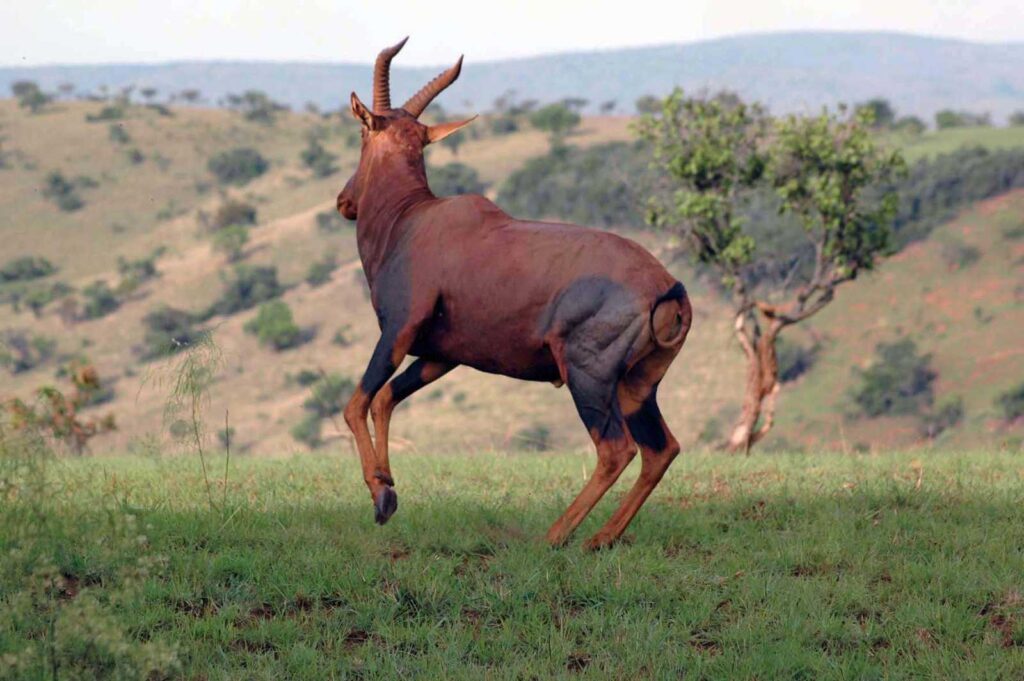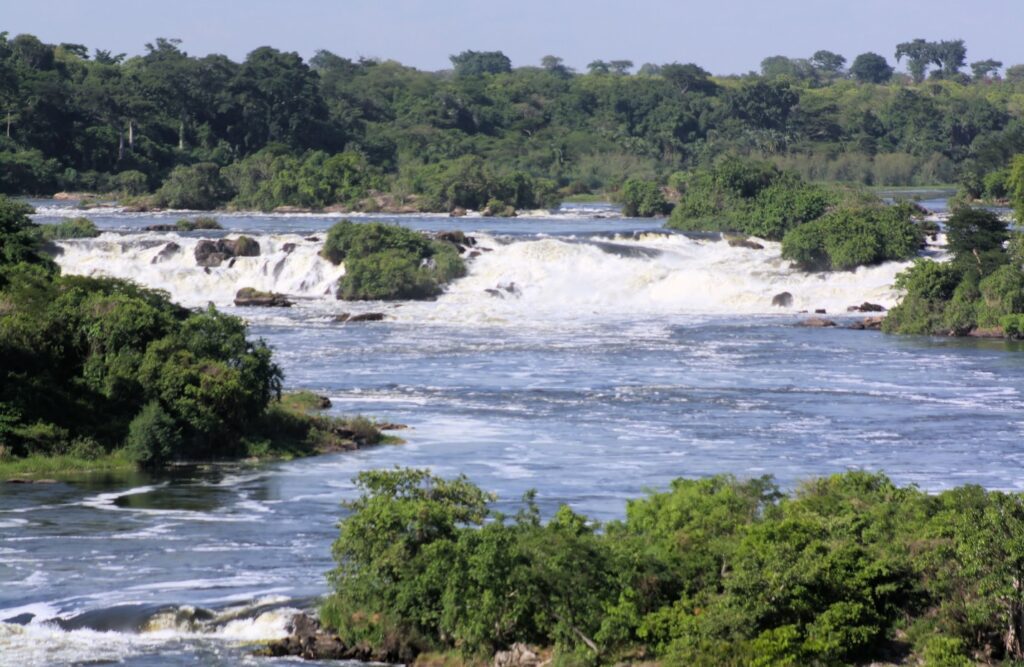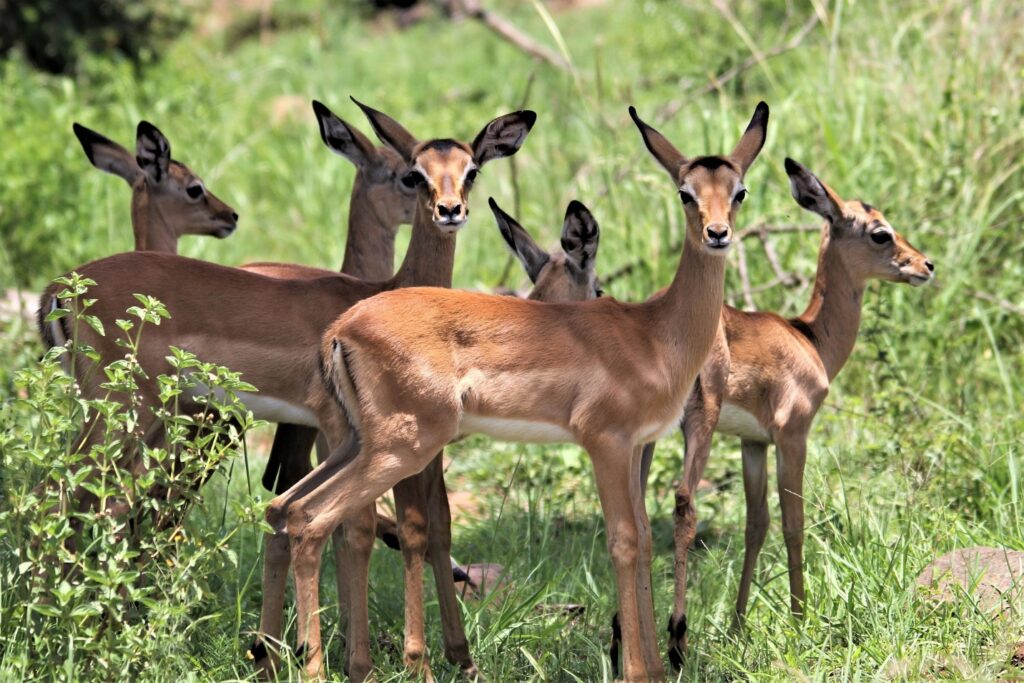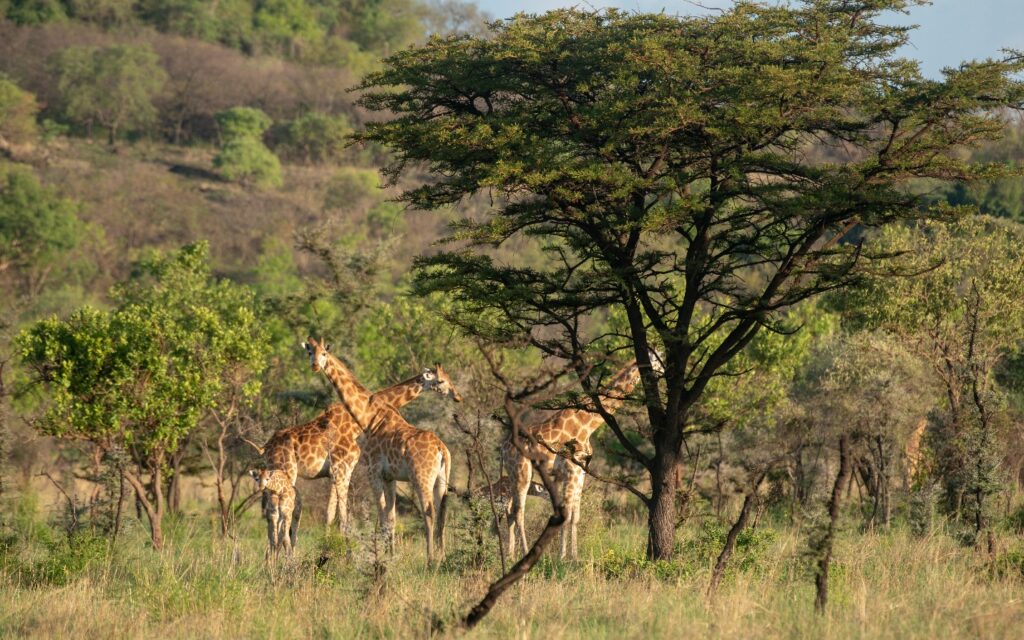The 12 Wildlife Reserves in Uganda
Uganda is referred as the pearl of Africa due to various number of attractions and one the attractions are game reserves which have further attracted so many tourists to visit these reserves. These game reserves are also under the management and protection of Uganda wildlife Authority (UWA).
1 AJAI WILDLIFE RESERVE

Ajai wildlife reserve is a small conservation protected area in northeastern Uganda dominated by a large island surrounded by seasonally flooded swamps and wooded savanna. Ajai lies on the western bank of the White Nile, approximately 40 km (25 mi) east of Arua. The reserve was mainly established to conserve the white rhinoceros which are now extinct in the country due to heavy poaching, the reserve was under the private protection by an influential chief in the year 1937, Ajai game reserve had 60 of 80 Ugandan rhinoceros in 1965.
Ajai game reserve derives its name from the local leader who used to protect the reserve he was called Ajai, there are now plans by the Ugandan government with the rhino fund to reintroduce the white rhinoceros in the reserve. The reserve covers an area of 148 km squared. The reserve supports around 35 km of papyrus swamp along with grassy floodplains and savannah woodland. Large mammals present include leopard, Uganda Kob, sitatunga, hippo, black and white colobus and warthog.

2 BOKORA CORRIDOR WILDLIFE RESERVE
Bokora corridor wildlife reserve is found in the northeastern Uganda, the park was embarked as a wildlife reserve in 1964 and occupies an area of 794 sq mi. the reserve is the second largest wildlife reserve in Uganda and part of the wider semi-arid Karamoja wildlife region that includes pian upe wildlife reserve and matheniko game reserve.

The reserve is a home to plants and animals that have been hardened by semi-arid conditions in the reserve. For wildlife to survive in this part of Uganda, it requires the ability to endure long dry spells. While visiting the reserve, one should expect to spot cheetals, buffaloes, elands, leopards, lions, hartebeest, lesser kudu, oribis, bright’s gazelles, giraffes, spotted hyenas, Topis, zebras and Ugandan Kobs. Birds include ostriches, the African hill babbler, the alpine chat, dusky turtle doves, grey cuckoo shrike among others.

3 BUGUNGU WILDLIFE RESERVE
Bugungu wildlife reserve is a protected area in both Buliisa district and Masindi districts in western Uganda. It covers an area of 473.0 km2 and it managed by Uganda wildlife authority. It was declared a wildlife reserve in 1968 but it was originally established as a controlled hunting area in 1963. It is located in western Uganda near to a village called bugungu and it borders with Murchison falls national park in the east side, Karuma wildlife reserve in the north east, budongo forest reserve in the north west, kyabatwa hill in the west.

Bugungu has many wildlife forms which include animals such as buffaloes, leopards, reed buck, Uganda Kobs, plants such as savannah woodland and 240 bird species which include the black billed barbets, the white browed sparrow weaver shoebill stork among others. The reserve has roads that enable tourists to go for nature walks, camping, bird watching, game drives among others.
4 KABWOYA WILDLIFE RESERVE

Kabwoya wildlife reserve was established in 1980 and it covers 8,700 sq km (3,400 sq mi). The reserve is situated within the western side of the Albertine rift valley between the breathtaking blue mountains of the Congo and lake albert. It is characterized by remote savannah plains along lake albert and tourists can enjoy the striking views of lake albert and the magnificent blue mountains of DRC. This reserve was gazette in 1980 and became a wildlife reserve in 2002.
The most common large mammals include Ugandan Kobs, oribi, defassa waterbuck, Jackson’s hartebeest, Anubis baboon, warthog, bushbuck and common duckers are also present in significant numbers. More localized species include hippo, which have recolonized the lake, and the small numbers of giant forest hog, chimpanzee, black and white colobus and vervet monkey that dwell in the riparian forest along the rivers hohwa and wambabya.
5 KARUMA WILDLIFE RESERVE

Karuma wildlife reserve is a protected area located in kiryandongo district in Uganda and it covers an area of 675.0 km2 (82000 hectares) being managed by Uganda wildlife authority. It was declared a wildlife reserve in 1964 but it was a controlled hunting area in 1962. Karuma wildlife reserve is located next Murchison falls national park.

This reserve is a home to many species of animals which include olive baboons, vervet monkeys, giraffes, elephants, hippos, leopards among others and bird species include pied kingfisher, yellow throated leaf, red-throated bee-eater, giant heron among other bird species. Karuma hydro power plant that generates 600megawatts was constructed within the Karuma wildlife reserve following the environmental guidelines of National Environment Management Authority (NEMA).
6 KATONGA WILDLIFE RESERVE

Katonga wildlife reserve is found in western Uganda along the banks of the katonga river. The reserve was established in 1998 and has approximately 211 sq km (81 sq mi). many of the species of plants and animals in the reserve are unique to its wetland environment. Additionally, the grass species at katonga wildlife reserve includes star grass, Bermuda grass and Rhodes grass. The reserve is further located in the Ibanda and kamwenge districts in western Uganda. The reserve is approximately 200 km (120 mi) by road west of Kampala, Uganda’s capital city. The reserve is named after the katonga river which primarily flows from the swamps southwest of lake Wamala towards Lake Victoria in the east, with lesser periodic flows from those same swamps to lake George in the west. The vegetation of the reserve is mixed savannah with acacia scrubland or woodlands. A large portion of the reserve is either permanent or seasonal wetlands. There are also pockets of riverine and tropical forest.

There are over forty animal species and over 150bird species within the reserve. The wildlife species include sitatunga, reedbuck, waterbuck, warthog, bushbuck, colobus monkeys, elephants and otter.
7 KIGEZI WILDLIFE RESERVE

Kigezi wildlife reserve was established in 1952, the site has an area of 265 sq km (102 sq mi). it is situated within Rukungiri district, western Uganda close to omuruyenzhe and maramagambo forest thus making it an ideal place for tourists planning to explore the wonders of maramagambo forest and queen Elizabeth national park during Uganda safaris.
Its largely composed of vast plains, savannas and forests. Its wildlife species thrive within its distinct vegetation including savanna, woodland and open grassland. The notable wildlife species to find within this spectacular nature reserve include Ugandan Kobs, waterbucks, bushbuck, giant forest hogs, Topis, elephants among others.

8 KYAMBURA WILDLIFE RESERVE

Kyambura wildlife reserve is located on the north eastern side of queen Elizabeth national park, approximately 30 km from queen Elizabeth national park. The reserve spans a distance of 11 km and links to the kazinga channel, which forms the northern info box protected area boundary or the reserve. Kyambura game reserve was formed as the Kyambura controlled hunting area in 1962 and upgraded to game reserve status in 1965. After the Uganda wildlife statute of 1996 changed the name of all game reserves to wildlife reserves, the reserve became formally known as the Kyambura wildlife reserve. It is a home a variety of wildlife and area is an important water source for many animals and is surrounded by savanna, but is generally noted for its high concentration of primate life located in the gorge.

Kyambura is the only in queen Elizabeth national park where habituation chimpanzees are seen. Other types primates include red tailed monkey, black and white colobus, baboons and vervet monkeys.
9 MATHENIKO WILDLIFE RESERVE

Matheniko wildlife reserve is a conservation area in the Karamoja sub region of northeastern Uganda. It is the fifth most threatened conservation protected area in Uganda. Matheniko is part of the corridor of protected areas in Karamoja that stretches from Kidepo national park down through bokora and pian upe wildlife reserves. The reserve’s northeastern boundary is also the Uganda Kenya border.

The Uganda wildlife authority is actively working to develop matheniko’s tourism infrastructure as of February 2012 it seeking bidders to construct a six roomed guest house there. The elevation of the reserve is between 1,070 and 1,830 m (3,510 and 6,000 ft).
10 PIAN UPE WILDLIFE RESERVE

Pian upe wildlife reserve is a conservation area in the Karamoja subregion of northeastern Uganda. It is the largest conservation protected area in Uganda. The south of the reserve was designated as debasien animal sanctuary in 1958. A government led project to convert land just south of Greek river for agriculture threatened the viability of wildlife conservation in the whole area. In 1964 the area was expanded northward and renamed pian upe game reserve. There is a hot spring potential for geothermal tapping at cheposukunya. Further to that, there are mercury wells at mt kadam.

Most of the reserve is covered by undisturbed grassland and wooded grassland. Although the area once supported healthy populations of lions, elephants, black rhinos and giraffes, these are now locally extinct. The last giraffe was reportedly poached in 1995 and in October 2019 15 giraffes from Murchison falls national park were reintroduced in the reserve by UWA. The commonly sighted mammal in the reserve is the oribi and others include jackals, leopards, cheetahs, Topi, civets, spotted hyenas, vervet monkeys, olive baboons among others. Pian upe is a home to enormous rock pythons and smaller but venomous puff adders, harmless water snakes are also found there.
11 TORO-SEMULIKI WILDLIFE RESERVE

Semiliki wildlife reserve is a conservation protected area in the western region of Uganda with headquarters at karungutu in ntoroko district. The reserve is located in Kabarole and Ntoroko districts, in toro sub region on the floor of the rift valley, where lake albert, the Rwenzori mountains and the kijura escarpment create backdrops. The reserve is about 55 km (34 mi) by road north of fort portal the nearest large city.

It was first established in 1926 by the British colonial government, the reserve is one of the oldest protected areas in Uganda. The reserve is highly alluring to birdwatchers, some 462 species have been recorded and it is one of the best places in Uganda to see the shoebill.
12 EAST MADI WILDLIFE RESERVE

East Madi wildlife reserve is a protected area located in Adjumani district in Uganda, in the Madi sub region. It covers an area of 831 km2, it is managed by Uganda wildlife authority. East Madi wildlife reserve has a variety of flora and fauna which includes over 50 mammals including hyenas, leopards, lions; more than 181 bird species including the shoebill stork; and 374 plant species. The reserve is used for nature walks, game drives and bird watching.
THE SHORTLIST OF THE 12 WILDLIFE RESERVES IN UGANDA
1 Ajai wildlife reserve.
2 Bokora corridor wildlife reserve.
3 Bugungu wildlife reserve.
4 Kabwoya wildlife reserve.
5 Karuma wildlife reserve.
6 Katonga wildlife reserve.
7 Kigezi wildlife reserve.
8 Kyambura wildlife reserve.
9 Matheniko wildlife reserve.
10 Pian upe wildlife reserve.
11 Toro-Semiliki wildlife reserve.
12 East Madi wildlife reserve.






